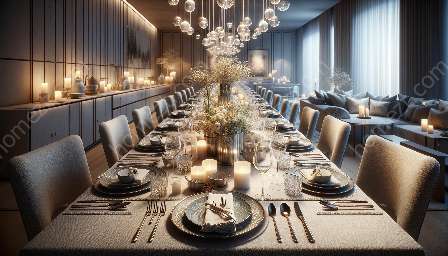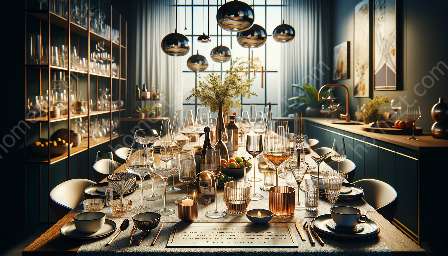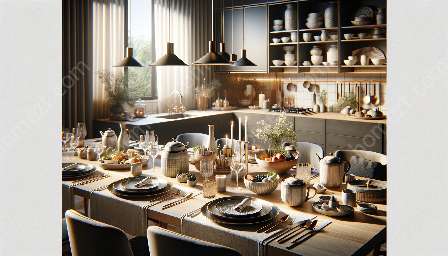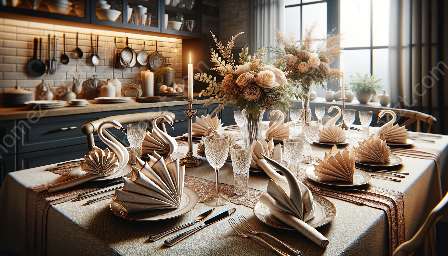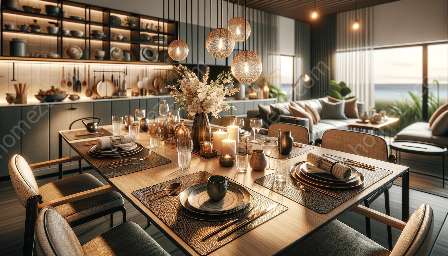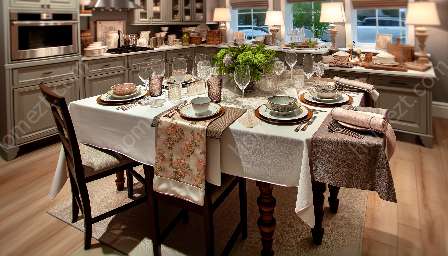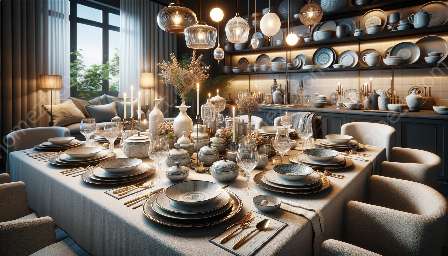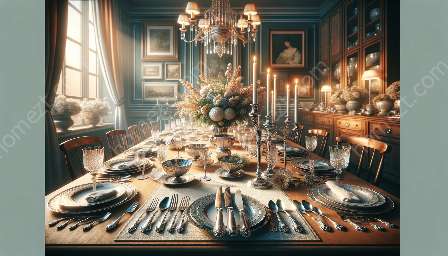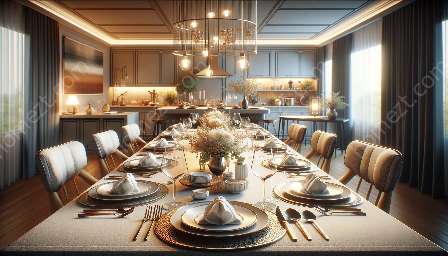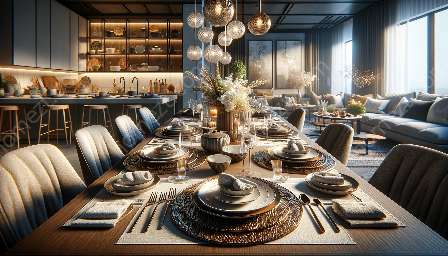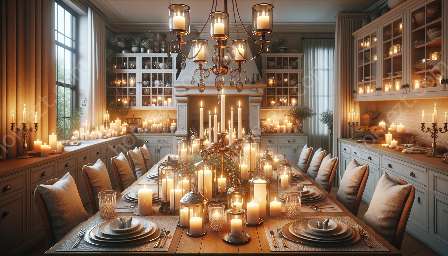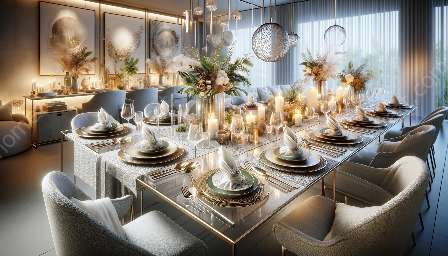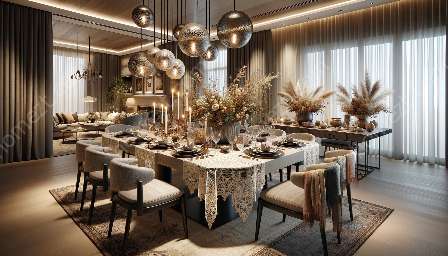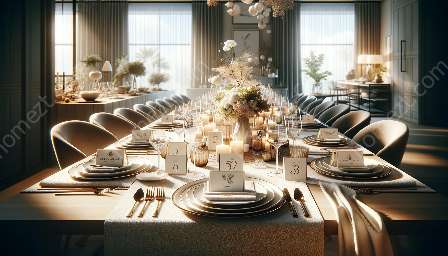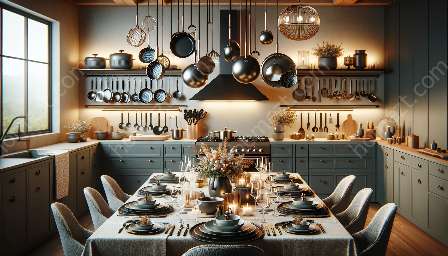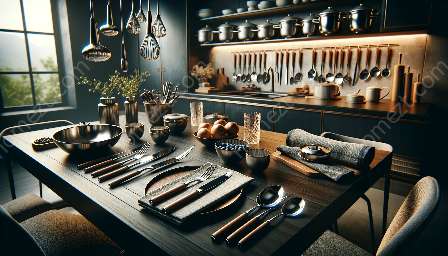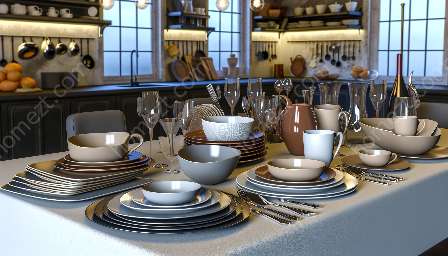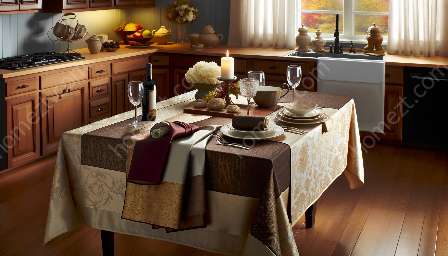Setting a table is more than just laying out utensils and dinnerware; it’s an art that conveys elegance, warmth, and hospitality. Whether you’re hosting a formal dinner party or enjoying a casual family meal, the right table setting style can enhance the dining experience. In this comprehensive guide, we’ll explore various table setting techniques, from classic to modern, and provide tips for creating an inviting ambiance in your kitchen and dining area.
Traditional Table Setting Style
Traditional table setting exudes timeless charm and sophistication. It follows a specific arrangement of utensils, plates, and glassware, creating a formal and structured look. In this style, each piece of cutlery and dinnerware has its place, reflecting a sense of decorum and etiquette.
Key elements of a traditional table setting include:
- Charger plate
- Dinner plate
- Salad plate
- Soup bowl
- Flatware (forks, knives, and spoons)
- Water glass and wine glass
- Napkin
To achieve a classic traditional table setting, start by placing the charger plate at the center, followed by the dinner plate and then the salad plate on top. The flatware is arranged in a manner that reflects the order of usage, with the water glass and wine glass positioned above the knives. The napkin can be elegantly folded and placed to the left of the plate or creatively arranged on top of the charger plate.
Modern Table Setting Style
The modern table setting style embodies a minimalist and sleek approach, showcasing clean lines and contemporary aesthetics. This style often focuses on simplicity, allowing the food and the tableware to take center stage. It is ideal for casual gatherings and informal dining events.
Key elements of a modern table setting include:
- Dinner plate
- Flatware (forks, knives, and spoons)
- Napkin
- Water glass
- Wine glass (optional)
To create a modern table setting, start with the dinner plate at the center. The flatware is typically placed in a streamlined manner, with the napkin either folded neatly or creatively arranged on the plate. The water glass is positioned to the right of the plate, while the wine glass is optional, depending on the occasion and personal preference.
Rustic Table Setting Style
Rustic table setting style embraces a cozy and laid-back atmosphere, inspired by the charm of countryside living. It often incorporates natural elements, such as wooden accents, earthy tones, and organic textures, evoking a sense of warmth and comfort.
Key elements of a rustic table setting include:
- Wood charger plate
- Dinner plate
- Mason jar or tumbler
- Rustic flatware (forks, knives, and spoons)
- Linen napkin
- Simple centerpiece (e.g., wildflowers, candles, or seasonal foliage)
To achieve a rustic table setting, begin with a wooden charger plate as the base, followed by the dinner plate. Utilize mason jars or tumblers for beverages, and opt for rustic flatware with a weathered or textured finish. Enhance the setting with a linen napkin placed in a casual, relaxed manner. Adding a simple centerpiece, such as a bouquet of wildflowers or a cluster of candles, contributes to the rustic charm of the overall table setting.
Casual vs. Formal Table Setting
Understanding the distinction between casual and formal table setting styles can help you determine the appropriate approach for different occasions. Casual table setting is more relaxed and versatile, allowing for a mix-and-match aesthetic and a less strict arrangement of tableware. It’s suitable for everyday meals, brunches, and informal gatherings. Formal table setting, on the other hand, adheres to specific rules and guidelines, presenting a more structured and elegant appearance. It’s reserved for special events, fine dining occasions, and formal celebrations.
Tips for a Well-Set Table
Regardless of the table setting style you choose, there are essential tips to enhance the overall look and atmosphere of your dining experience:
- Consider the theme and occasion when selecting tableware and decor.
- Ensure proper spacing between place settings to allow comfortable dining.
- Use quality linens that complement the chosen style and add a touch of elegance.
- Incorporate elements of personalization, such as place cards or name tags for guests.
- Experiment with different textures, colors, and patterns to create visual interest on the table.
- Utilize ambient lighting and candles to create a warm and inviting ambiance.
By following these tips and exploring various table setting styles, you can elevate your dining experience and create memorable moments in your kitchen and dining area. Whether you prefer the timeless formality of a traditional setting, the contemporary simplicity of a modern approach, or the rustic charm of a countryside-inspired style, there are endless possibilities to showcase your personal taste and hospitality through the art of table setting.


